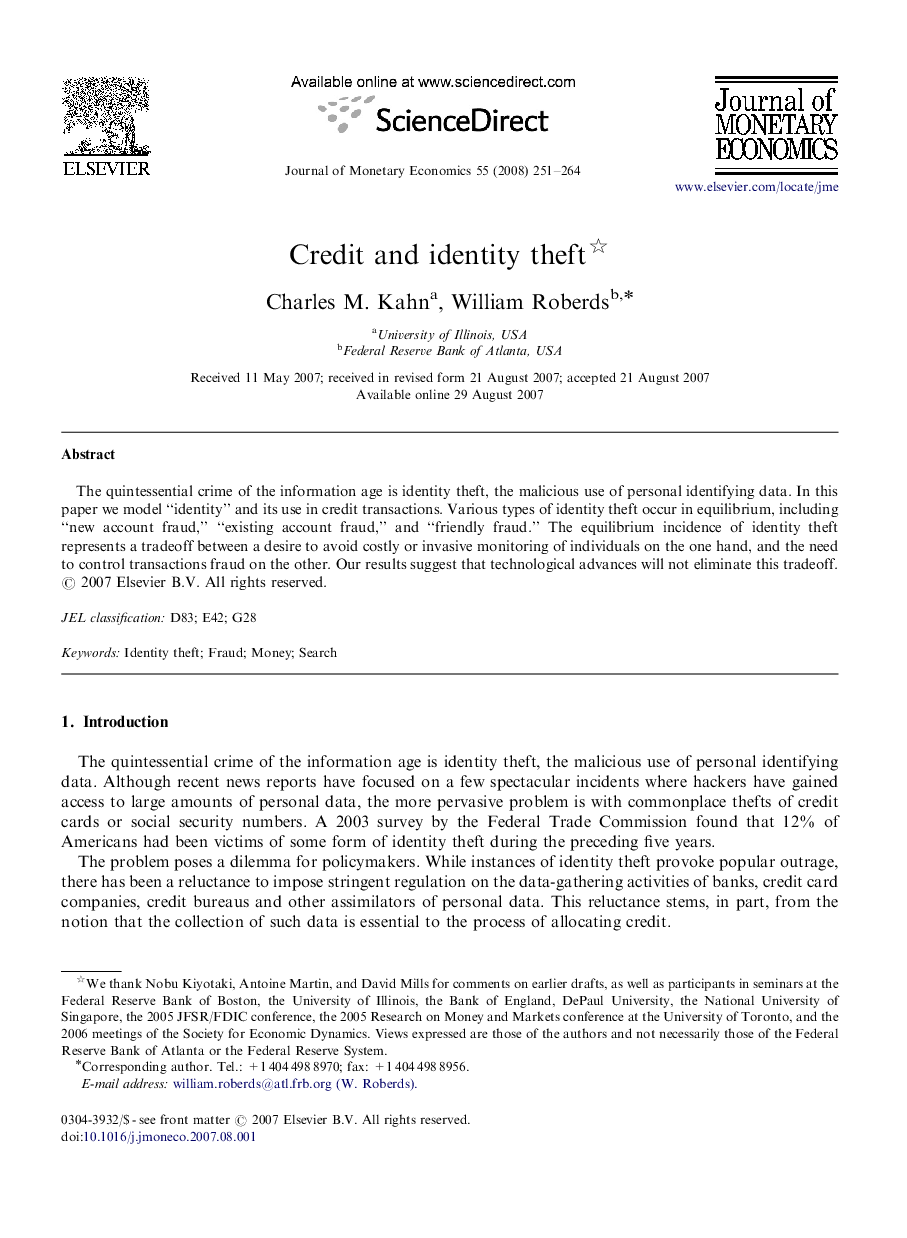| Article ID | Journal | Published Year | Pages | File Type |
|---|---|---|---|---|
| 967629 | Journal of Monetary Economics | 2008 | 14 Pages |
Abstract
The quintessential crime of the information age is identity theft, the malicious use of personal identifying data. In this paper we model “identity” and its use in credit transactions. Various types of identity theft occur in equilibrium, including “new account fraud,” “existing account fraud,” and “friendly fraud.” The equilibrium incidence of identity theft represents a tradeoff between a desire to avoid costly or invasive monitoring of individuals on the one hand, and the need to control transactions fraud on the other. Our results suggest that technological advances will not eliminate this tradeoff.
Related Topics
Social Sciences and Humanities
Economics, Econometrics and Finance
Economics and Econometrics
Authors
Charles M. Kahn, William Roberds,
